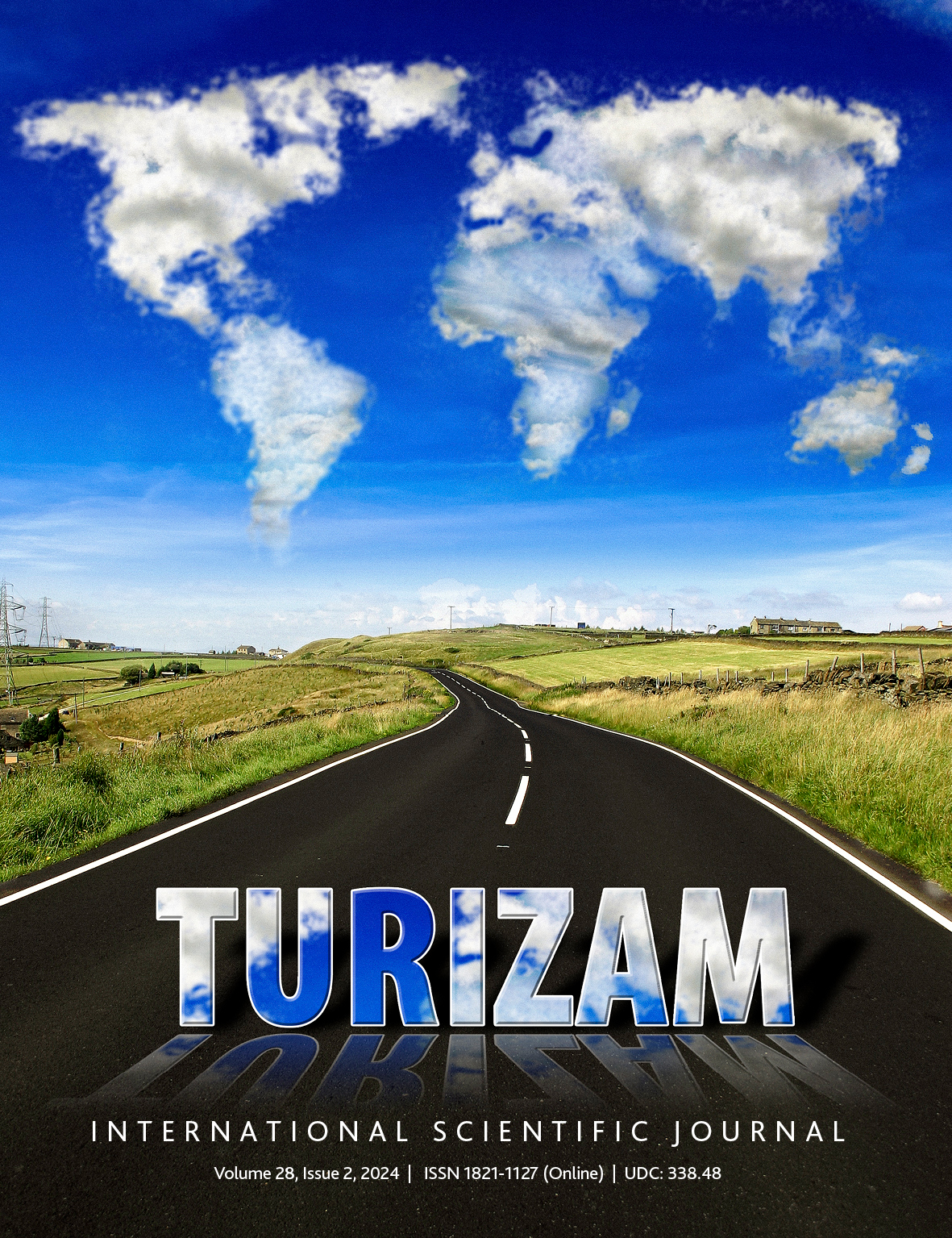Effect of Sector Vulnerability in the Rainfall, Wildlife Tourism Sector Performance Relationship in Maasai Mara Ecosystem, Kenya
Abstract
Abstract
This study sought to examine the role of sector vulnerability in the relationship between rainfall and wildlife tourism sector performance in Maasai Mara ecosystem, Kenya. This study is important because the Maasai Mara being a semi arid area is extremely vulnerable to the effects of climate change. The study adapted a pragmatic research approach that advocates for mixed methods research design. The study was based on a null hypothesis that sector vulnerability does not mediate the relationship between rainfall and wildlife tourism performance. Qualitative and quantitative data was collected using a questionnaire that was randomly administered to 466 respondents. Further qualitative data was collected by use interviews from 30 key informants purposively selected for the study. The results were analyzed using SPSS version 22 and AMOS version 21. The results showed that sector vulnerability mediated the relationship between rainfall and wildlife tourism performance β = - 0.439, t= -4.179, P<.001 this results were further collaborated by content analysis of qualitative data. The study concludes that wildlife tourism is extremely vulnerable to climate change indicator such as rainfall thus sector specific studies should be carried out so as to develop sector specific adaptations.
Key words: Vulnerability, climate change, rainfall, wildlife tourism performace
References
Baron, R.M., & Kenny, D.A. (1986). The moderator mediator variable distinction in social psychological research: Conceptual, strategic, and statistical considerations. Journal of Personality and Social Psychology, 51, 1173-1182.
Bentler, P. M. (1990). Comparative fit indexes in structural models. Psychological bulletin, 107(2), 238.
Cameron, R (2011), ’Mixed Methods Research: the Five Ps Framework’, Electronic Journal of Business Research Methods, Vol. 9, No. 2, September, pp. 96-108. ISSN: 1477-7029 Retrieved from: www.ejbrm.com/issue/current.html
Creswell, J. W. (2014). A concise introduction to mixed methods research. SAGE publications.
Creswell J & Clark P. V. (2011) Designing and Conducting Mixed Methods Research. Thousand Oaks CA: Sage.
Collier, J. E. (2020). Applied structural equation modeling using AMOS: Basic to advanced techniques. Routledge.
Dube, K., Nhamo, G., (2020). Vulnerability of nature-based tourism to climate variability and change: case of Kariba resort town, Zimbabwe. Journal of Outdoor Recreation and
Tourism. 29, 100281 https://doi.org/10.1016/j.jort.2020.100281.
Fornell, C., & Larcker, D. F. (1981). Structural equation models with unobservable variables and measurement error: Algebra and statistics.
Gossling, S., Scott, D., Hall, M., Ceron, J., & Dubois, G. (2012). Consumer Behaviour and Demand Response of Tourists to Climate Change. Annals of Tourism Research , Vol. 39, No.1, pp.36–58.
Hair, J. F., C. M. Ringle, et al. (2011). "PLS-SEM: Indeed a silver bullet." The Journal of
Marketing Theory and Practice 19(2): 139-152.
Hu, L. T., & Bentler, P. M. (1998). Fit indices in covariance structure modeling: Sensitivity to underparameterized model misspecification. Psychological methods, 3(4), 424.
IPCC, (2023). Climate Change 2023: Synthesis Report. Contribution of Working Groups I, II and III to the Sixth Assessment Report of the Intergovernmental Panel on Climate Change [Core Writing Team, H. Lee and J. Romero (eds.)]. IPCC, Geneva, Switzerland,184 pp., doi: 10.59327/IPCC/AR6-9789291691647.
Kenya National Bureau of Statistics (KNBS). (2023). Economic Survey 2023. Kenya National Bureau of Statistics Herufi House Nairobi Kenya. https://www.knbs.or.ke
Mose R.K. (2017):Vulnerability and Impacts assessment of Wildlife Tourism to Climate Change. A Study of the Maasai Mara Ecosystem. In Almas Heshimati, Ed. 2017. Economic Transformation for Poverty Reduction in Africa. Routledge New York and UK. Pgs 36- 57. ISBN 978-1-138-63519-7
Ng’etich J. (2018 November 10th).Queries after fire delays wildebeest migration to Mara. The Standard.https://www.standardmedia.co.ke/article/2001302190/wildebeest-delay- and- blame-game
Nunnally J.C & Bernstein, I H (1994) Psychometric theory (3rd ed.) New York: McGraw Hill.
Ogutu, J., Owen-Smith, N., Piepho, H.P. & Said, M.Y. (2011). Continuing Wildlife Population Declines and Range Contraction in the Mara Region of Kenya during 1977-2009. Journal of Zoology, 285, 99-109. https://dx.doi.org/10.1111/j.1469-7998.2011.00818.x
Ringle C. M., Sarstedt M., Sinkovics N. & Sinkovics R. R. (2023). Data in Brief 48,2023, 109074. Elsevier Inc. https://www.doi.org/10.1016/j.dib.2023.109074
Susanto J., Zheng X., Liu Y. & Wang C. (2020). The impacts of climate variables and climate- related extreme events on island country’s tourism: Evidence from Indonesia. Journal of Cleaner Production 276. (2020) 124204. www.elsevier.com/locate/jclepro
Tourism Research Institute (TRI) (2022). Kenya Annual Tourism Sector Perfomance Report 2022. 2023 Tourism Research Institute. www.tri.go.ke
Ullman, J. B. (2001). Structural equation modeling. In B. G. Tabachnick & L. S. Fidell (2001). Using Multivariate Statistics (4th ed& pp 653- 771). Needham Heights, MA: Allyn & Bacon.
Wencui, Z. (2014). A structural equation modeling approach to factors that influence farmers' behaviour and behavioural intentions towards water policy changes. Unpublished PhD thesis.University of Lethbridge, Dept. of Economics. Lethbridge, Alta. http://hdl.handle.net/10133/3523

